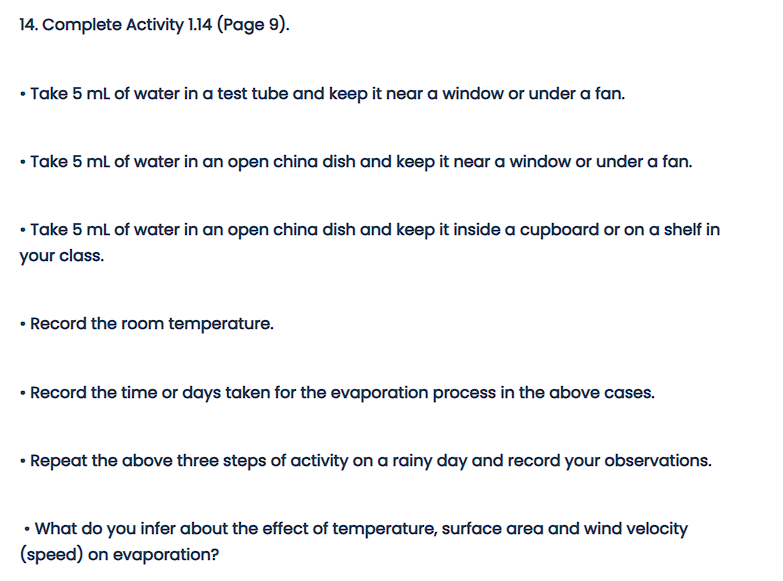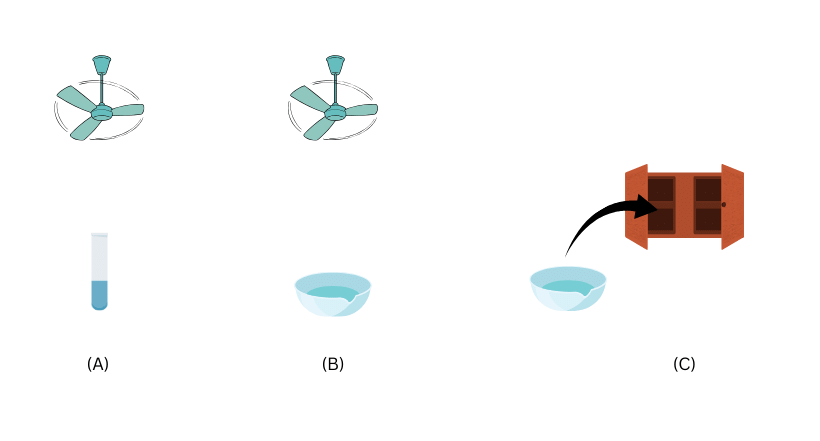
Answer:
Aim: To observe the rate of evaporation in each scenario and infer based on the observations.
Materials Required: Water, test tube, two china dishes, fan, cupboard.
Procedure:
(i) Pour 5 mL in the test tube and place it under a fan.
(ii) Pour 5 mL in the china dish and place it under a fan.
(iii) Pour 5 mL of water in the second china dish and place it inside the cupboard.
(iv) Record the room temperature.
(iv) Record the rate of evaporation in each of the three cases.
(v) Now repeat the above three steps of activity on a rainy day and observe the rate of evaporation in each of the three cases.
Observations:
- The room temperature was recorded at 37oC.
- The water kept under the fan in the china dish evaporated the fastest (1 hour), followed by the water in the test tube under the fan (5 hours) and then then water in china dish in the cupboard (3 days).
- The temperature on the rainy day was 28o C.
- On the rainy day the evaporation was slower for all three cases.

Conclusions:
- The china dish had a larger surface area than the test tube, hence evaporation was faster. Evaporation is a surface phenomenon and rate of evaporation increases with increase in surface area.
- The evaporation in case of the water in the china dish and test tube was faster than the cupboard because of wind speed generated by the fan. The particles of water vapour above the china dish and test tube moved away with the wind, which enhanced the capacity for evaporation. In case of the china dish inside the cupboard, there was no wind speed and hence evaporation was slower. Evaporation increases with increase in wind speed.
- The rate of evaporation on the rainy day was slower because of lower temperature and high humidity. Thus, evaporation depends on temperature and humidity.
Related Links:
Solution to Group Activity
Solution to Activity 1.1
Solution to Activity 1.2
Solution to Activity 1.3
Solution to Activity 1.4
Solution to Activity 1.5
Solution to Activity 1.6
Solution to Activity 1.7
Solution to Activity 1.8
Solution to Activity 1.9
Solution to Activity 1.10
Solution to Activity 1.11
Solution to Activity 1.12
Solution to Activity 1.13
Solutions to Chapter 1 Matter in Our Surroundings


